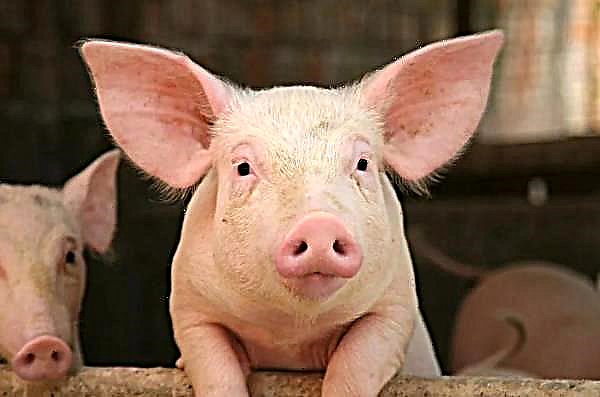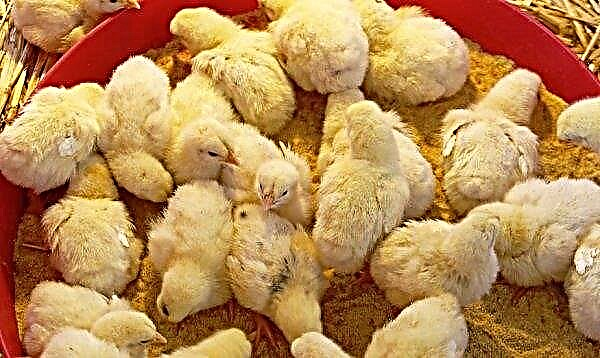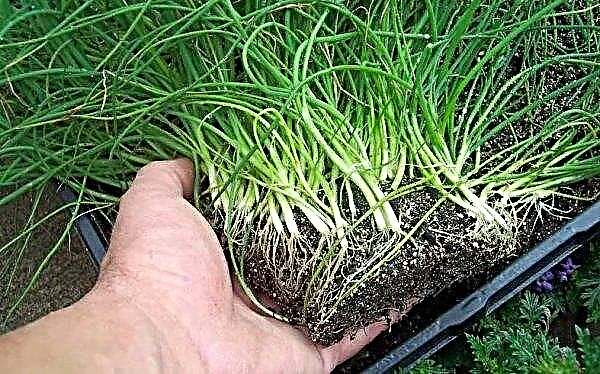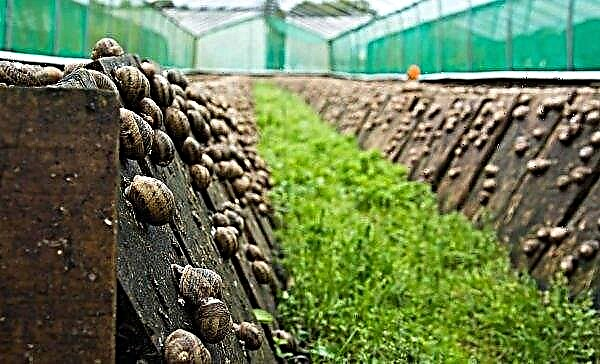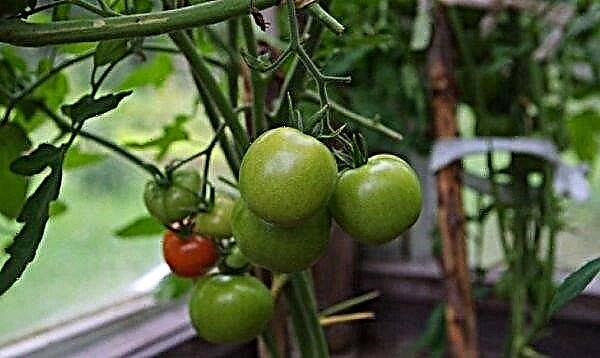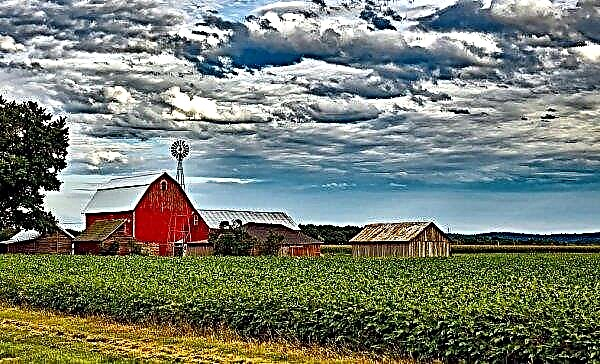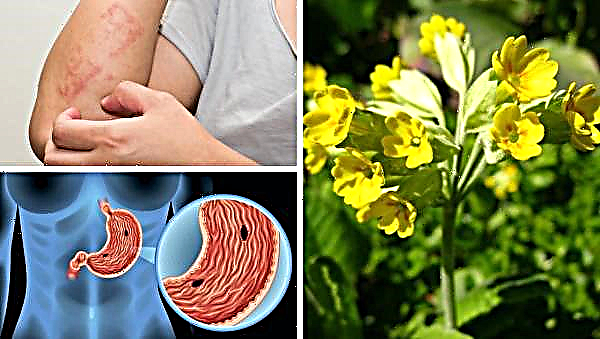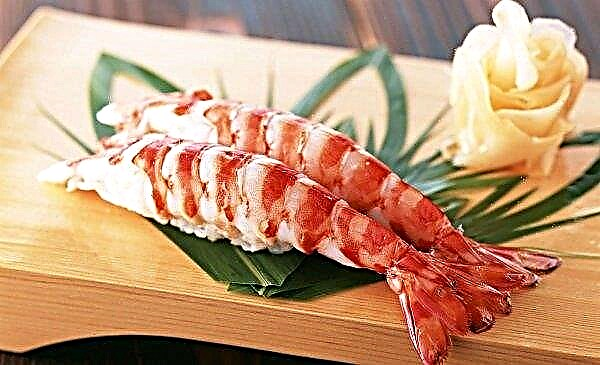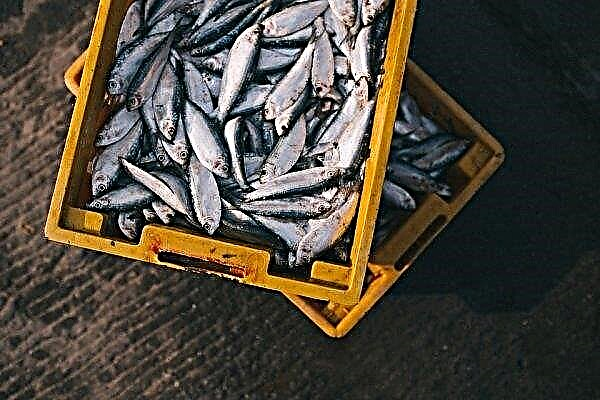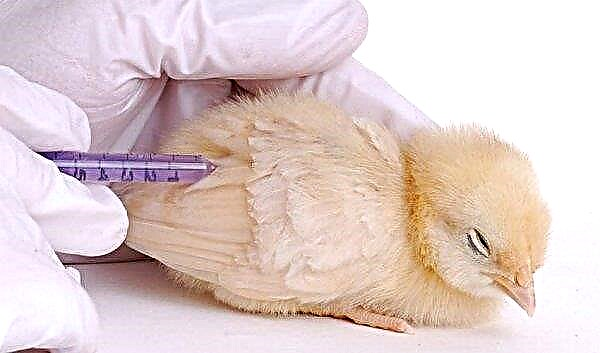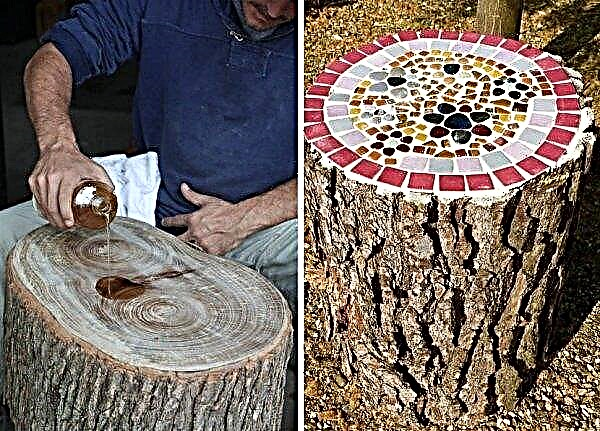Currant is a perennial shrub that is known for its beneficial properties. First of all, it is an indispensable source of vitamins, which has a healing effect on the human digestive and cardiovascular system. The article will focus on one of the varieties of black currant - Globus, its features and growing technology.
Grade description
The plant is medium-sized, formed by young green and lignified gray-yellow thick shoots. The buds are large, single, deviated from the branch, have a sharp tip. Foliage rounded wedge-shaped. It consists of three blades, the surface of which has a wrinkled surface and is painted in light green.
Did you know? Currant leaves contain more vitamin C than the berries themselves, so tea is prepared from them, which has a general strengthening effect on the body.
The central sector is more developed than the lateral ones. The edges are serrated, the stalk is thick and short, located perpendicular to the shoot. The variety tolerates winter well, self-fertile, resistant to diseases of a fungal nature, as well as a kidney tick.
Selection history
Known since 2004, thanks to the work carried out by T. Shagina at the Sverdlovsk breeding station (Ukraine). Varieties Leningradsky giant and Minai Shmyryov were taken as parents.
Characteristics of berries, ripening time, yield
Currant Globus is a medium-ripening variety. The berries are large, have a rounded shape and weigh about 2 g. The skin is thin, painted black. The pulp is sweet, without aroma, contains a large number of seeds. The bush begins to bear fruit in the 4th year of growth. The ripening period is in July. The yield indicator is 7 t / ha.
Advantages and disadvantages
- The advantages of the variety are:
- large-fruited;
- high taste;
- resistance to diseases and pests;
- simultaneous ripening of berries;
- high winter hardiness.
As for the shortcomings, they include the compactness of the bush, which limits yield.
Agricultural technology
Culture is classified as undemanding in terms of its growing conditions. However, there are a number of recommendations that you must follow when growing currants.
Seat selection and landing
Well-moistened but not swampy areas are diverted for landing. Culture loves a lot of sunlight, but can grow in partial shade. Sod-podzolic, loamy and chernozem soils are suitable. Currants are planted in early October. The site is dug and a pit is formed with a depth of 40 cm and a width of about 50 cm.
Important! It is necessary to protect the plant from drafts, which negatively affect it.
A half bucket of water is poured into it, when it is absorbed, the fertile soil prepared from:
- compost - 1 bucket;
- super-phosphate - 150 g;
- potassium sulfate - 40 g;
- wood ash - 30 g.
All this, cover with a layer of ordinary earth to avoid burning roots. After the seedling is buried 6-8 cm above the root neck. Then they make another half bucket of water and mulch the pericarp circle with peat or humus. Between plants observe a distance of 1-1.25 m.
Care
Currant is a moisture-loving plant that needs infrequent but plentiful watering.
The event is held 4-5 times per season:
- during the period of active growth of green mass;
- during flowering;
- during the formation of ovaries;
- during the period of filling berries;
- after harvesting.
In an arid climate, irrigation is carried out every 10 days. About 50 liters of water are spent on each plant.
In the fall, under digging, make organic substances:
- bird droppings;
- compost;
- manure.
4-6 kg of fertilizer are isolated per plant, to which the following components are added:
- potassium sulfate — 10–20 g;
- superphosphate - 50 g.

Liquid top dressing is applied 4 times a year:
- during budding;
- after flowering;
- during the period of filling berries;
- after harvesting.
For this, 20 g of phosphorus and 10 g of potassium nitrogen fertilizers are diluted in 10 l of water. This amount of fertilizer is enough for one bush.
Important! The rhizome of the plant absorbs nutrients only at soil temperatures above +10 ... + 15 ° C, therefore, it is not worth rushing to make fertilizers.
Pest and Disease Control
The variety is resistant to all fungal diseases, as well as a kidney tick. Affected by a currant kidney mite, a bush of currant.
Affected by a currant kidney mite, a bush of currant.
However, this does not exclude the need for preventive treatment of plantings:
- Hot processing. It is carried out in early spring, before the awakening of the kidneys. The water is heated to + 80 ° C and with the help of a watering can, the bushes are watered, per 10 l of liquid per 3 bushes. Then carry out sanitary pruning of the bush.
- Solution of "Nitrofen" or "Karbofos". Substances are used before budding, 10 g of water requires 200 g of active substance. Each bush is sprayed abundantly with the prepared solution.
In addition, it is necessary to regularly inspect the plantations for any damage, in case of ailments, treat the bushes with Bordeaux mixture or copper sulphate.
Trimming and shaping a bush
Currants are cut annually in spring and autumn. But, since the currants begin to bloom very early in the currant, it is important to have time to prune before that. Start the procedure with cutting seedlings when planting. Shoots shorten to 15–20 cm, leaving 3-4 well-developed buds. In the autumn, all sick, damaged, and also too low branches are removed. In the second year, sanitary pruning is carried out - all damaged, frostbitten and diseased shoots are cut. Fig. 1. Currant pruning: a - annual seedling; b - a biennial bush; c, d - shortening of shoots. Fig. 2. Currant bush before anti-aging pruning (a), after it (b) and pruning of a neglected bush (c). After harvesting, it is also necessary to inspect the crop for affected branches and, if necessary, remove them. Shrubs are formed up to 4–5 years of age so that it consists of 10–15 branches of different ages. Then only sanitary cutting is carried out.
Fig. 1. Currant pruning: a - annual seedling; b - a biennial bush; c, d - shortening of shoots. Fig. 2. Currant bush before anti-aging pruning (a), after it (b) and pruning of a neglected bush (c). After harvesting, it is also necessary to inspect the crop for affected branches and, if necessary, remove them. Shrubs are formed up to 4–5 years of age so that it consists of 10–15 branches of different ages. Then only sanitary cutting is carried out.
Did you know? A decoction of foliage, shoots and currant bark is used in folk medicine as a remedy for dermatitis, diathesis and eye diseases.
Wintering
Currant tolerates winter well and does not require additional protection. Despite this, it is still necessary to carry out a series of actions that will help to save all the shoots. First of all, the bush must be bent so that all branches are under the snow and as close to the ground as possible. To do this, the plant can be pressed down with tiles, evenly distributing the shoots on the ground and not trying to hold them with one load. From above the laid bush can be covered with agrofibre.
Video: preparing currant bushes for winter
Harvesting and storage
Berries are picked early in the morning, after the dew has dried. Stack the removed fruits immediately in a shipping container, because when they are poured, they easily crumple. In order to preserve the marketability of berries for longer, they are torn off slightly unripe and together with bunches. Not more than 6 kg of currant, laid out in a thin layer, is placed in one container. The berries are stored in the refrigerator for 14 days.
Globus currant is a fairly new mid-season variety, which is distinguished by large and tasty fruits. The species received many positive reviews, due to its unpretentiousness and resistance to a number of diseases. Follow the recommendations given above and you will successfully grow currants in your yard.
Reviews
The Globus variety is large-fruited and quite tasty, but it has a disadvantage - ripe berries crumble, a long brush, I didn’t recognize the yield, I didn’t want to harvest from the ground. We often have frosts in the Urals during flowering, and this variety has a great color the frost beats. Although you are warmer.

